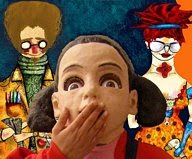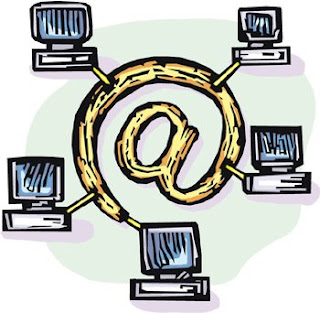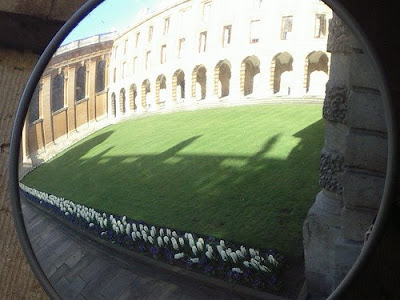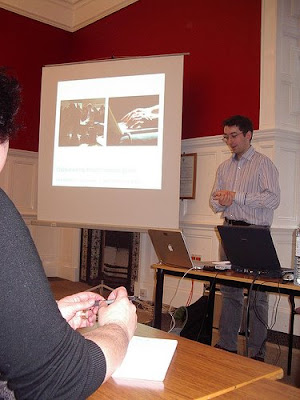
*cross post with Animation for Education NING *
Having attended animation workshops, made a few plasticine model animations and talked up the use of animation in PLL (primary language learning), three weeks ago I decided to take the plunge and let the kids show me what they could do!
Year 4 are currently studying a Unit of the QCA Key Stage 2 Spanish Scheme of work that is based on the Saint Saëns musical suite, Le Carnaval des Animaux. I think it’s a good unit as it allows lots of different cross curricular links to be made – you can read about it on my blog if you’re interested! I had the idea whilst sitting in one of Oscar’s workshops of using plastic animals to create an animated ‘carnival’ as an end of term project for the class – fun but also has a various purposes – enhancing linguistic skills as well as technological ones.
First step was working out how to do it! I bought a MacBook about six weeks ago and, after much deliberation as to whether I was willing to allow 31 9year olds to touch my lovely white Mac, I decided to be brave and use it. I had thought I might need to buy a webcam as the ones in school don’t seem to work (not been used for a while ;o) ). However, the Macbook has an iSight camera built in and I wanted to get on with it. Next, I raided the Nursery class for some animals – there were Duplo ones as well but I liked the more ‘realistic’ looking ones, especially as some had adult and baby sized ones.
Next, I set up the equipment before the class came in and hit my first snag – how to make the animals seen. The iSight was focused higher that the animals and the only way to get the models in camera was to either incline the screen towards the table – not really an option – or to raise the stage which I did with two trays, covered with paper, and the MacBook as near as possible to the trays. I did wonder if the iSight could be ‘zoomed’ but a quick call to someone in the know told me that I would just have to make the best of it. (I got a tip later that there is something called iGlasses that will make it zoom – I’ll be investigating before next time – ta Andrew!) Background was paper on a freestanding whiteboard, as close to the table as possible.
The class arrived and of course, everyone was fascinated by the set up and started crowding around. i like the enthusiasm but it did make some of them a little deaf to instructions! Having explained what we were going to do and how we might achieve it, the pupils got into pairs and chose their animal from the selection. Most had a couple of models for their chosen animal. We discussed our idea and how the ‘story’ might go, deciding that all the animals are on their way to the carnival; I left it to each group to decide how their animals might move / act on the way, so some are walking, others so excited that they’re dancing and the hyena and the tiger are having a scrap!
I demonstrated what they needed to do using the elephants, emphasising small movements, 12 pictures for one second of film and instructing them to keep the animals far back on the stage to make sure they’re as big as possible. Then, whilst I taught the rest of the class, I sent one pair at a time to the back table where they animated their section of the film, with the instruction to call the next group when their animals reached the centre of the stage.
The first morning we managed to do about six sets of animals and when we reviewed the footage, there were some speedy animals! A bit too much excitement I think for some to remember all the instructions.
As I have the class for two hours each week for Spanish and RE, I had to pack up the stuff until the next week which had it’s problems as the backdrop had been drawn on by the next week, and everything needed resetting. Once done though, the second lot of groups paid more heed to the need for small movements and lots of shots, and by the end of the morning we had an animation!
Today we added ‘finishing touches’ – titles and credits, sound track and sound effects, and voiceovers using iMovie. It’s amazing how long it took to ‘finish’ 1 minute 20 seconds of film! But then again, it was our first go and there was an air of general madness at school today ;o) ( rain and nearing the end of term!)
Finally, I’ve just shared it to Youtube from iMovie.
So, reflecting on the experience, I’d say the following;
It’s our first attempt – please bear that in mind!!
By the end, the class had grasped the basics so the case of the flying pigs will not happen next time.
Background could’ve been brighter – we didn’t want to detract from the animals but we’d use scenery next time.
I’d definitely want to be able to zoom in / out next time as the animals don’t fill the screen.
Although I ended up with a splitting headache – hence my earlier tweet! -it was worth it! The class belongs to the ICT coordinator who was intrigued by what we were doing and several other members of staff came to have a nose at what we were doing. And the class were full of enthusiasm – they increasingly gave constructive criticism and helped one another, and were desparate to see the finished product.
So, here’s the premiere (el estreno in Spanish) of El Carnaval de los Animales.
Please leave comments – the kids will love that! and be honest in a kind way please ;o)















